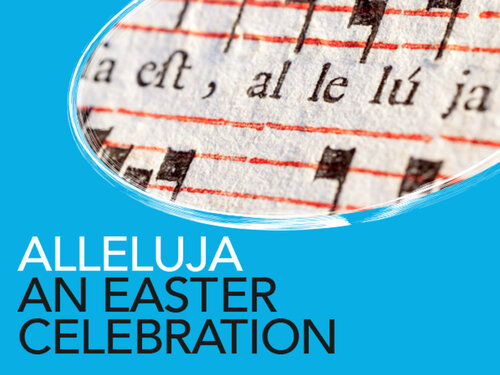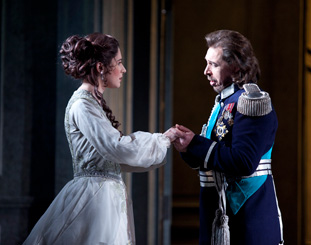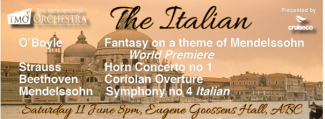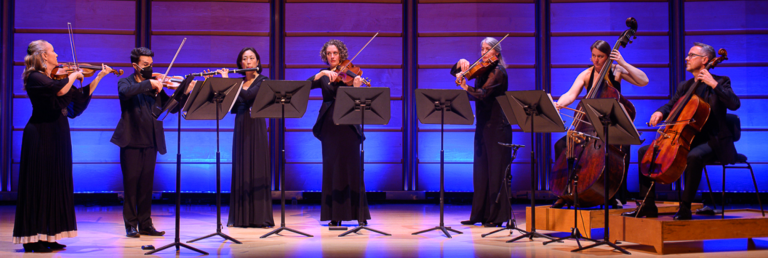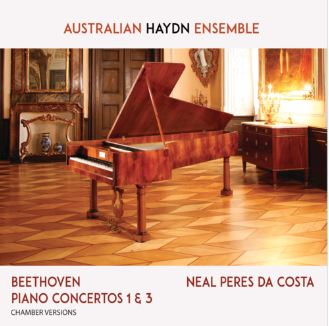Concert Review: Alleluja – An Easter Celebration/ Bach Akademie Australia
Alleluja – An Easter Celebration/ Bach Akademie Australia/ Bach Akademie Australia Choir
Parish of the Holy Name Church, Wahroonga
27 March 2021
Written by Larry Turner
The recent Easter program by the Bach Akademie Australia entitled Alleluja was doubly appropriate. First, for the Easter season, and second, for celebrating the return of concert performances under near-pre-Covid conditions.
The second of the two performances was held in the Parish of the Holy Name Church at Wahroonga. This is a large rectangular space with an altar apse behind the performing area and it produces a rich, warm and clear sound that projects well into the church.
The program opened with Bach’s cantata for Easter Sunday Christ lag in Todesbanden (Christ lay in death’s bonds) BWV 4. This is an early work which has come down to us in a version Bach later prepared for performances in Leipzig. Madeleine Easton conducted the small instrumental group and choir of eight, with two singers to each part. The opening Sinfonia established the credentials of the instrumental players, displaying fine ensemble, intonation and phrasing.
Individually, the singers all have fine voices and when singing together, they have the important added virtue of blending with each other. This is the hallmark of fine ensemble singing. The movements in the cantata for a single voice were sung by both of the two singers of the specified voice type. This is contrary to the currently fashionable notion that Bach’s vocal works should all be sung by solo singers – despite Bach’s clearly expressed preference for two to four singers to a part. The performance well justified this musical decision.
The cantata was followed by Bach’s magnificent double-choir motet Singet dem Herrn, again conducted by Madeleine Easton. This is one of the finest of all Bach’s works and his most technically challenging motet. It needs a team of virtuoso singers, and the BAA choir certainly provided that. There were times, however, when the basso continuo of five players tended to dominate the sound and obscure the lines of the individual singers.
The first half of the concert ended with a reconstructed version of Bach’s Triple Concerto BWV 1064 which Madeleine Easton directed from the violin. This work has survived in a version Bach made for three harpsichords when he was Director of the Leipzig Collegium Musicum during the 1730s. Scholars generally agree, however, that the concerto was probably originally written for three solo violins. In this performance, violinists Madeleine Easton, Matthew Greco and Stephen Freeman made a fine team, producing stylish playing with a tone that was perhaps rather bright but still well-matched.
One of the advantages of the triple violin version over the more familiar harpsichord version is that the interplay between the three soloists can be followed visually as well as aurally.
This is a dimension which is missing in triple harpsichord performances but which could be enjoyed in this performance.
During the interval, the audience was able to appreciate a non-musical dimension of this delightful venue by wandering around the tranquil and expansive grassy environs of the church. The Bach Akademie Australia is to be congratulated on using a concert venue which is so delightful both aurally and environmentally.
The second half of the program was Bach’s Missa Brevis in A (BWV 234) which is one of four such works consisting of just the Kyrie and Gloria from the full mass. Latin short masses were liturgically acceptable in both Lutheran Leipzig on high-feast days, and also for the Catholic capital of Dresden where Bach would have liked to work. So, with these short masses he was maintaining a foot in both camps.
In this performance, the solo movements gave several singers an opportunity to shine. All did so with distinction, but special mention must be made of the moving performance Chloe Lankshear gave of the aria Qui tollis, accompanied only by the violins and the beguiling flute playing of Mikaela Oberg and Jessica Lee weaving their chromatic webs. The performance came to a splendid conclusion with the full-throated choral forces enjoying a rollicking Cum sanctu spiritu. It brought a satisfying conclusion to an excellent concert combining scholarship with superb musicality, all of which was enhanced by excellent program notes.
The Bach Akademie Australia’s performances are gleaming gems in Sydney’s musical calendar.
SoundsLikeSydney©
Larry Turner is an avid attender of concerts and operas and has been reviewing performances for Sounds Like Sydney for several years. As a chorister for many years in both Sydney and London, he particularly enjoys music from both the great a capella period and the baroque. He has written programme notes for Sydney Philharmonia, the Intervarsity Choral Festival and the Sydneian Bach Choir and is part of a team which researched and published A Choral Century: Sydney Philharmonia 1920-2020 the history of Sydney Philharmonia for its centenary.

